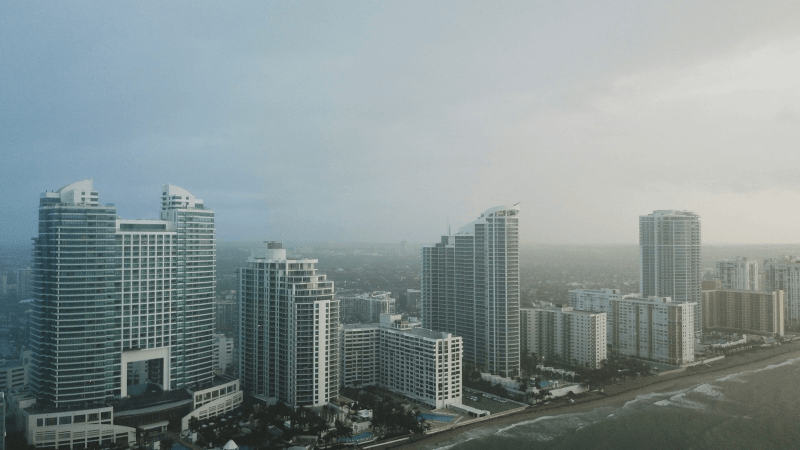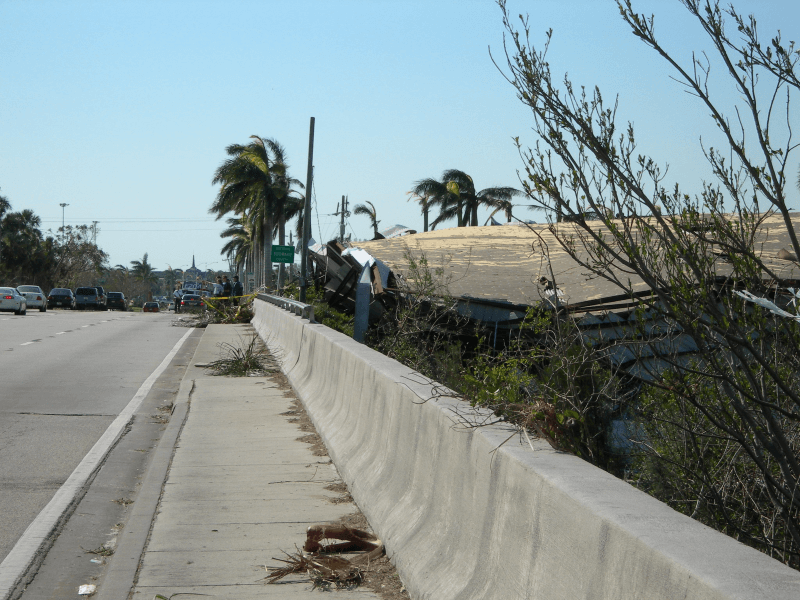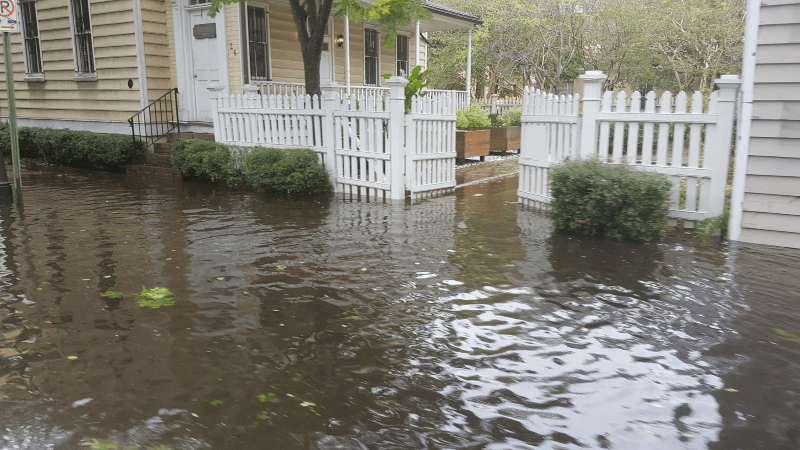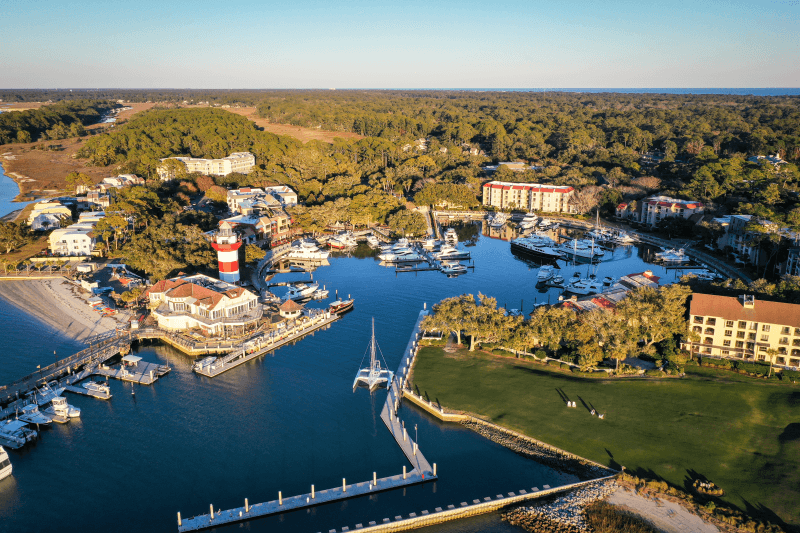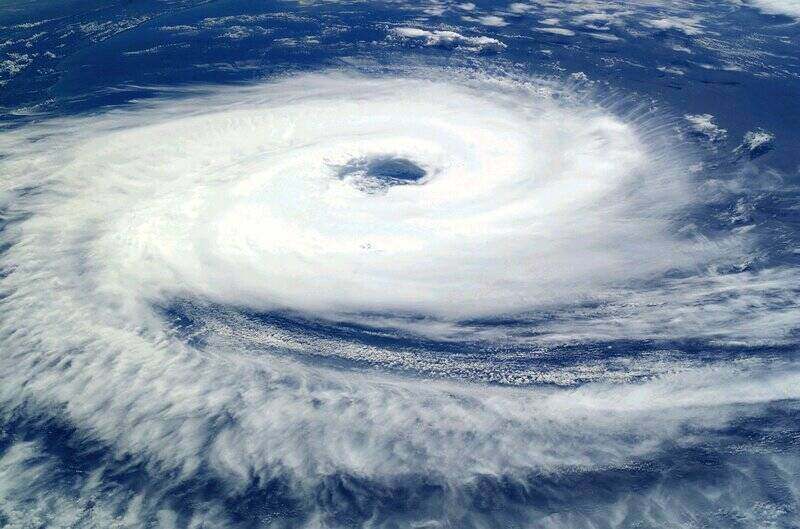
Which U.S. counties are most in harm’s way this hurricane season?
With NOAA predicting an “above-normal” storm season, LawnStarter ranked 2025’s Most (& Least) Affected Counties by Hurricanes using 10 metrics across 4 categories.
Some findings? A staggering $5.8 billion in expected annual hurricane damages is concentrated in just 10 counties, nearly one-third of the projected nationwide loss.
Other stormy stats:
- 🔍 Over the past 10 years, 215 of the 318 ranked counties saw at least 50% or more of their hurricanes reach Category 3 or stronger.
- 🌀 43 counties have weathered 10 or more hurricanes in the past decade.
- 🌧️ Nearly 50 counties have endured 4 Category 5 storms since 2015.
See where over 300 U.S. counties ranked below. To learn how we ranked the counties, see our methodology.
Contents
- County Rankings
- Top 5 Most Affected Counties
- Key Insights
- Ask the Experts
- Methodology
- Hurricane Yard Protection
County Rankings
See how each county fared in our ranking:
Top 5 Most Affected Counties
Key Insights
Florida, North Carolina, and South Carolina counties dominate the 2025 ranking, claiming 47 of the top 50 spots. All 3 states were impacted by Hurricane Helene in 2024, which brought widespread flooding and damaging winds. Beaufort County, South Carolina (No. 5), and Taylor County, Florida (No. 243), recorded some of the highest wind gusts during the storm.
Harris County, Texas (No. 16), home to Houston, has the highest Hurricane Risk Score and expected annual loss in the country, more than $1.15 billion, according to FEMA. A recent study found that 91% of Houston is not hurricane-ready, and nearly all residents lost power during both a recent derecho and Hurricane Beryl.
Despite every county in the ranking facing at least moderate hurricane risk, places like Kennebec County, Maine (No. 318), DeWitt County, Texas (No. 317), and Bexar County, Texas (No. 315), land at the bottom, with lower storm activity and direct hits in recent years.
Louisiana is already bracing for hurricane season, with the National Guard updating emergency response plans, but nature may offer a twist. Saharan dust drifting across the Atlantic Ocean could suppress storm development this summer, even as coastal parishes like Jefferson (No. 63), Terrebonne (No. 57), and Orleans (No. 75) rank among the most potentially affected.
South and North Carolina now tie Honolulu County, Hawaii (No. 72), for the most hurricanes in the past 10 years. While Honolulu has seen more Category 2 to 4 storms, only 1 Category 5 has struck the island in the past decade, and Hawaii’s risk remains lower because of infrequent landfall and reduced financial impact.
Editor’s Note
I lived on the Big Island of Hawaii for a time, and to say I experienced the best weather of my life is an understatement. I remember only hearing thunder and lightning once in the 5 years I lived there. Hawaii’s unique geography keeps most storm drama away, but when a hurricane did start heading our way, it was a different story. Stores emptied fast (unless you were in the market for SPAM), gas stations ran dry, and ATMs were tapped. Everyone prepared like it was a guaranteed hit. I lived on the leeward (or dry) side of the island, shielded by a volcano, and as often happens in Hawaii, the storm veered off at the last minute. In the end, we barely got a breeze.
Discover more storm stats below.
Top 10 Counties With the Highest Expected Annual Financial Loss
1. Harris County, TX
Houston, Pasadena, Atascocita
$1.15 billion
2. Broward County, FL
Fort Lauderdale, Pembroke Pines, Hollywood
$894.8 million
3. Palm Beach County, FL
West Palm Beach, Boca Raton, Boynton Beach
$863.8 million
4. Miami-Dade County, FL
Miami, Hialeah, Miami Gardens
$831.7 million
5. Hillsborough County, FL
Tampa, Brandon, Riverview
$441.6 million
6. Lee County, FL
Cape Coral, Lehigh Acres, Fort Myers
$387.9 million
7. Brevard County, FL
Orlando, Palm Bay, Melbourne
$365.9 million
8. Charleston County, SC
Charleston, Mount Pleasant, James Island
$358.2 million
9. Pinellas County, FL
St. Petersburg, Clearwater, Largo
$286.7 million
10. Collier County, FL
Golden Gate, Immokalee, Naples
$281.1 million
Ask the Experts
The U.S. faced 27 billion-dollar disasters in 2024, totaling more than $180 billion in damages, well above recent averages. It was also the hottest year ever recorded globally, according to NOAA, fueling more intense and frequent storms.
We asked a panel of experts how Americans can better prepare for hurricane season and recover from its aftermath. Read their insights below:
- Who is most at risk for financial and emotional distress from hurricanes?
- What are the 3 best resources for disaster relief?
- What are the top 3 ways to prepare for a severe hurricane?
- What are the 3 best ways to help those who were affected by a hurricane?
- How can local governments best prepare for increasingly intensifying hurricanes in the U.S.?




Who is most at risk for financial and emotional distress from hurricanes?
Those who are living in poverty or are in lower income brackets [are most at risk] because the cost of evacuating and any recovery cost makes these communities highly vulnerable.
Resilience is extremely difficult for these communities. Black and Hispanic communities have a higher risk because of historical policies and practices.
What are the three best resources for disaster relief?
- FEMA — Federal Emergency Management Agency
- Red Cross
- Local organizations and nonprofits
What are the top three ways to prepare for a severe hurricane?
- If it is severe, you should evacuate. However, the key is to know beforehand where valuables are kept in the event of evacuation.
- Keep phone contacts and other important documents in a ziplock bag in the event of flooding.
- Have a hurricane plan in place now.
What are the three best ways to help those who were affected by a hurricane?
- Determine their emotional, physical, and mental needs — and if they know where family members are located.
- Help them to get through the short-term stress and shock from the loss of property and life.
- Help them to find resources to address immediate and short-term needs.
How can local governments best prepare for increasingly intensifying hurricanes in the U.S.?
- Message the community about the power, typical damage of hurricanes, and why evacuation is required.
- Help them to prepare hurricane kits and identify important documents.
- Provide some guidance about how to evacuate and the needed resources for evacuation.

What are the top three ways to prepare for a severe hurricane?
I would begin with the basics:
- Know if you are in an evacuation zone and have a route planned along with keeping all your important documents together to take with you or keep in a safe place that will not be underwater in your house.
- Have supplies, food, water, and medications on hand to last several days to two weeks without power. This includes taking care of animals as well.
- Have a way to get weather alerts from a trusted source such as hurricanes.gov or weather.gov and stay updated on the conditions. Determine and stay in a safe location and be prepared to adhere to the instructions and advice of local officials.
What are the three best ways to help those who were affected by a hurricane?
- Often it is the basics that are required after a hurricane affects an area: shelter, water, ice, and food that will not go bad in unrefrigerated conditions.
- They are likely to need assistance clearing the area safely and not over-exerting themselves and staying cool in the process as best you can.
- Finally, a lot of people are shocked by what took place and need someone to listen and help them according to what you learned from hearing their talking points.
How can local governments best prepare for increasingly intensifying hurricanes?
Mitigate the impacts wherever possible. If a coastal community perhaps setback laws and restrictions and had post-evacuation routes and shelters that are tested and stocked with food and equipment to house evacuees are some ways [to prepare].
Inland areas that will feel the impacts of hurricanes need to prepare by possibly taking action along known flood areas with the removal of people and perhaps longer-term solutions of dedicating those lands to uses other than living spaces.
This answer could go in many different directions based on whether you are inland or coastal and where you live. The best answer is to contact your local emergency managers for advice for your area.

Who is most at risk for financial and emotional distress from hurricanes?
The people most at risk for financial distress are:
- Those without insurance.
- Those living in mobile homes — simply due to the structure being more vulnerable to damage.
- Those without any savings to assist with the time in between disaster and the receipt of insurance funds.
The people at risk for emotional distress are likely those with higher levels of responsibilities — someone with children, animals, multiple properties, or multiple affected family members.
Emotional distress, however, can be a result of someone who might have been more vulnerable (dealing with stress, etc.) prior to the disaster and now the disaster has been a tipping point. Emotional distress is complicated because it can affect all of us for different reasons.
What are the three best resources for disaster relief?
- Local emergency officials
- The Red Cross
- FEMA Disaster Recovery Centers
What are the top three ways to prepare for a severe hurricane?
- Proactive behavior. Prior to the hurricane season, people should follow the advice of the National Hurricane Center and get prepared. Have a “hurricane kit.” Pay attention to local officials and, when an event is oncoming, prioritize your preparation. Start with securing energy sources (solar-powered devices are really becoming helpful), making sure you have food that does not require energy to prepare, and securing water supplies.
- Then you have to secure the area. Make sure all outside materials are picked up and moved inside. Damages escalate when things become projectiles.
- Only evacuate if told to do so or if experience tells you that your area will flood.
What are the three best ways to help those who were affected by a hurricane?
- Provide use of energy.
- Provide food.
- Provide water.
If you are unable to come into the area, electronic payments can be very helpful to try and offset some of the costs. Venmo is very useful if people can get internet access — which is often available at Disaster Relief Centers.
How can local governments best prepare for increasingly intensifying hurricanes in the U.S.?
Identify places with the least amount of protection currently and prioritize those areas for enhanced protection. If we can protect more areas and more people, then the disaster impact is lessened and the state will recover more quickly.
Methodology
We identified the 10 most relevant factors for ranking the Top U.S. Counties Most at Risk for Hurricanes and grouped them into four categories:
- Hurricane Risk
- Hurricane History
- Financial Impact
- Disaster Cleanup
Each factor was assigned a weight based on its impact. The categories, factors, and weights are listed in the table below.
We then evaluated the 318 U.S. counties with a FEMA-designated Hurricane Risk Score using data from the sources listed below the table. Each county received a score (out of 100) for every factory, category, and overall.
A county’s Overall Score is the average of its score across all metrics. The county with the highest score ranked No. 1 (most affected), while the county with the lowest score ranked No. 318 (least affected).
Notes
- The “Worst” among individual factors may not be No. 318 due to ties.
- Hurricanes that passed within 100 miles of a county’s center, the average radius of a hurricane, were counted toward that county’s storm history, even if landfall occurred elsewhere.
- FEMA does not provide Hurricane Risk Scores for the Eastern Pacific Basin, so West Coast counties were excluded from this study.
Sources: Federal Emergency Management Agency, National Oceanic and Atmospheric Administration, and Environmental Protection Agency
Hurricane Yard Protection
In 2024, hurricanes were among the most damaging disasters in the U.S., with billions in property losses and widespread power outages. As storms grow more intense, your yard can be both a hazard zone and a first line of defense.
“Have a hurricane plan in place now,” advises Gregory S. Jenkins, Professor of Meteorology at Penn State. “Know where your valuables are kept, and keep phone contacts and important documents in a Ziplock bag in case of flooding.”
From fencing to fallen trees, hurricane winds can tear through outdoor spaces in minutes. With a few smart moves, you can reduce risks and protect your home’s exterior.
- Walk your yard early in hurricane season to identify hazards and create a prep checklist.
- Secure or store patio items like furniture, grills, and décor before a storm.
- Remove dead branches and trim trees regularly to minimize the risk of downed limbs and roof damage.
- Use wind-resistant landscaping with deep-rooted native plants and ground covers.
- Replace gravel mulch with bark or rubber mulch that won’t become flying debris.
- Reinforce fencing or replace old posts to reduce collapse risk.
- Clean gutters and keep drains clear to prevent yard flooding.
- Clean up yard debris after a storm to prevent injuries and restore order.
With the 2025 hurricane season predicted to be especially active, prepping your yard now can limit damage and cleanup when the next storm hits.
Hire a local LawnStarter pro to mow your lawn, trim your trees, and for storm cleanup.
Media Resources
Quotes from LawnStarter Editor-in-Chief Jeff Herman
Before hurricanes and tropical storms, grocery stores are emptied of water, food, and other emergency supplies. Lines form at gas stations as people fuel up to hit the road to evacuate – or hunker down, knowing that hurricanes can knock out gas stations in the hardest-hit areas.
What you might not think to do is to hit an ATM before the winds pick up. Power outages can take banks and ATMs offline, too.
When I worked at The Tampa Tribune, we lived with the annual threat of hurricanes. Our offices were on the Hillsborough River at the north end of Tampa Bay. If a hurricane makes it into Tampa Bay, we were told it would be like a pinball bouncing all around.
Legend has it that education writer Terri Foster once swam across the flooded parking lot to get to the front door to work. I remember bureau chief Chuck Crumbo decked out in a yellow raincoat in the office as he waited for Hurricane Floyd. When the hurricane changed course and was downgraded, Crumbo called the weakened storm Pink Floyd.
That was then. This is now. These regions, states, and counties face the highest potential hurricane impact this year, our research shows.
- The Northeast saw more Category 1 hurricanes over the past decade than Florida, with counties like Middlesex, Massachusetts (No. 162), and Hillsborough County, New Hampshire (No. 268), leading the count.
- North Carolina landed 32 counties in the top 50, led by Onslow County (No. 9) and New Hanover County (No. 12). The state received nearly $900 million in FEMA aid following Hurricane Helene in 2024, but many communities are still awaiting cleanup support and weighing buyout programs in flood-prone areas.
- Florida and hurricanes go hand-in-hand. Most of the state’s counties landed in the top half of our ranking. But not all Sunshine State regions face the same level of threat. Gadsden (No. 274), Hamilton (No. 272), and Bradford (No. 269) counties fell to the bottom of the ranking, with fewer recent storms and under $10 million in projected annual losses.
- Some more rural areas face less financial fallout. Counties like Evans, Georgia (No. 227), Hamilton, Florida (No. 272), and 2 Louisiana parishes, Evangeline (No. 285) and Avoyelles (No. 287), each have under $6 million in estimated hurricane-related property risk.
- Harris County, Texas (No. 16), claims the most national disaster debris recovery facilities, 200. 21 counties in our ranking have no disaster cleanup facilities.
Main Photo Credit: WikiImages / Pixabay / Lice`nse
